


© 2022-2025 Lava-rox. All rights reserved.






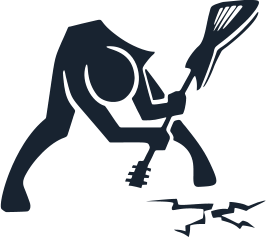



-----------------------------------------------------------------------------------------------------------------
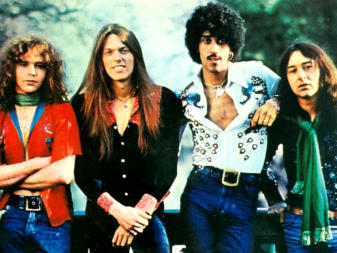
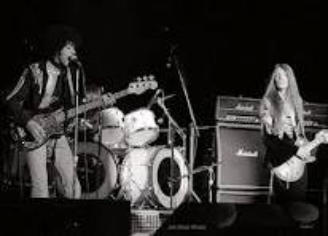
In 1973, the 60’s band Free dissolved. Singer Paul Rodgers and drummer
Simon Kirke recruited guitarist Mick Ralphs and bassist Boz Burrell to form a
new hard rock quartet. Paul got the name from a photo in an old Victorian
book captioned “beware of bad company”, and “Bad Company” was born. Led
Zeppelin’s manager Peter Grant took on that role for the new band and they
signed onto Zeppelin’s label Swan Song.
Their 1974 self titled release was an instant hit reaching the top of the charts
in both the US and UK, featuring the hits “Can’t Get Enough” and “Movin’ On”.
They followed up with Straight Shooter in 1975 and Run With The Pack in 1976;
both were popular records peaking at the top of the charts.
By the end of the 70’s the band grew tired of touring, and their manager Peter
Grant lost interest after the demise of Led Zeppelin in 1980. Bad Company
would reform several times over the next decades both with and without Paul
Rodgers, but the awesome straight up hard Rock sound from the first two
albums was not the same. Bad Company are shown at right, from left to right:
Boz Burrell, Paul Rodgers, Mick Ralphs, and Simon Kirke.
-----------------------------------------------------------------------------------------------------------------
The 70’s Part One
The 1970’s were the peak years of the classic hard rock sound.
New bands heard the thunder before them, and with those
influences created new styles and sounds solidifying the hard rock
genre.
Formed in 1969 by singer/bassist/song write Phil Lynott, Irish rockers Thin
Lizzy had released the hit “Whiskey In a Jar” years earlier but had not been
able to follow that up with another hit. The band changed guitar players and
styles several times and in 1974 found a more hard rock style.
1976’s release of Jailbreak was the first Thin Lizzy Album to chart in the UK and
featured the smash hits “Jailbreak” and “The Boys Are Back In Town”. The
band followed up releasing Johnny The Fox also in 1976. They followed up with
succesful tours but tensions in the band rose once again, and again Irish
guitarist Gary Moore was brought in to replace Brian Robertson.
Robertson returned in 1978 for a tour the the recording of their live album
Live And Dangerous which successfully captured their energy and hard rock
sound. Thin Lizzy epitomized the dueling guitar hard rock sound and were a
major influence on future music.
The band continued rotating guitarists, their last successful album Chinatown,
released in October 1980.
By 1986 Phil Lynott was hospitalized due to multiple issues and passed away,
never again recreating the great sound Lizzy was famous for. The classic
lineup is shown at right; from left to right guitarist Brian Robertson and
Gorham, Phil Lynott, and drummer Brian Downey.
In the late 60’s a new band with a completely new style was forming in
London. Blending jazz, blues, pop, and rock with complex time signatures,
changes, and multi-layered harmonies, Yes released their first self-titled
album in 1970. They followed up with Time And A Word which made the UK
charts.
The addition of guitarist Steve Howe brought new guitar techniques to band
and they retired to the English countryside to write their next LP, The Yes
Album released in 1971, which made the chart with perennial hits such as
“Yours Is No Disgrace”, “I’ve Seen All Good People”, and “Starship Trooper”.
Keyboardist Rick Wakeman was added to complete the band and Fragile was
released at the end of 1971. Yes now defined a new progressive sound, and
their records were topped the charts. 1972’s Fragile was critically acclaimed
and supported by extensive touring. Inspired by the traffic “roundabouts on
their commute to the studio, Fragile’s hit single “Roundabout” became their
best known song. The middle section contains some odd sounding
percussion instruments. The band wanted some different percussive sounds
and with the music stores being closed, they gathered milk bottles and filled
them with different levels of liquid to create different pitches.
Drummer Bill Bruford left in 1972 and was replaced by Alan White who had
once sat in with the band. With a worldwide tour pending, Alan only had a
few days to learn their vast and complex repertoire, which he pulled off
impressively. The live album Yes Songs was recorded and released in 1973
featuring what many would consider their “classic” and most talented lineup.
The bands album artwork was skillfully done by Roger Dean, who’s work
became a trademark of the band.
Yes struggled in the last 70’s and 80’s with personnel changes and changing
music popularity.
In 1980, singer Jon Anderson left and found themselves again without a
keyboard player. Trevor Horn and Geoff Downes from the Buggles were
recruited and a newer more edgier sound was produced. Drama was
released in 1979 and peaked in the charts featuring “Machine Messiah”. The
band toured to sold out shows in North America.
1981 saw the band breakup with Downes and Howe leaving to form Asia.
Singer songwriter guitarist Trevor Rabin was introduced to bassist Chris
Squire and Alan White in 1982. They created a new band called Cinema,
however after Jon Anderson was brought back in they changed the name back
to Yes. The new band featured more of a pop style which was evident on
their first album release in 1983 90125, named after it’s catalog serial number.
90125 was a smash hit driven by hit singles such as “Owner of a Lonely
Heart”, “Leave It”, and “It Can Happen”. They followed up with extensive tours
and Big Generator in 1985. However Anderson felt stifled by Rabin’s creativity
and the band broke up in 1988.
There would be a grand “Union” of most of the past members of the band in
1991 which produced a 2CD release by the same name.
Yes was finally introduced into the Rock ’N Roll hall of fame in 2017, an
acknowledgment and tribute to their lasting impact on music. Yes continues
to record new music and tour today, although no original members are
present.
Yes are considered the founders of “prog rock” and would be a major
influence on countless bands to come.
----------------------------------------------------------------------------------------------------------------
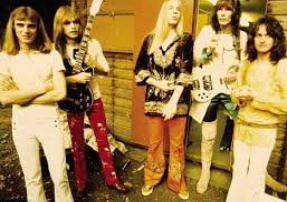
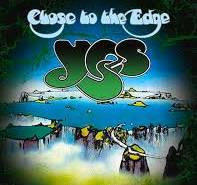
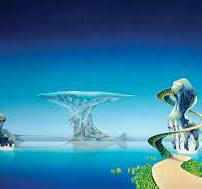
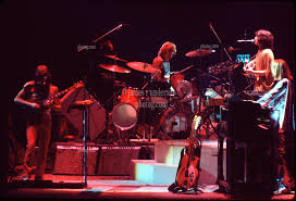
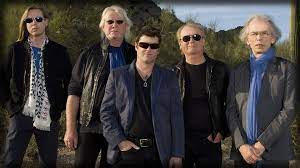
“Classic” Yes lineup, from left to right: Alan White, Steve
Howe, Rick Wakeman, Chris Squire, and Jon Anderson.
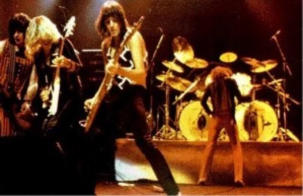
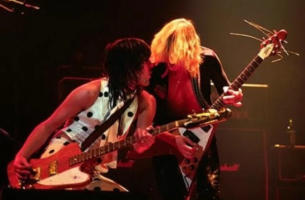
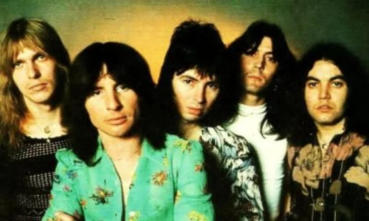
Also in 1968 in London, another rock band was forming. UFO’s first two
records did not get much attention but the addition of guitarist Michael
Schenker in 1973 and the release of Phenomenon created a new hard rock
format.
Force It in 1975, No Heavy Petting in 1976, and with the addition of keyboard
player Paul Raymond, the release of Lights Out in 1977 perfected their sound
and achieved commercial success with hits “Too Hot Too Handle”, “Lights Out”,
and “Love to Love”. The band toured extensively and their popularity grew
internationally. They released the double live album Strangers In The Night in
1979 which peaked in the UK charts and captured the raw energy of their live
shows.
Tensions between vocalist Phil Mogg and Michael Schenker boiled over in late
1978 and Schenker left for a highly successful solo career. UFO continued to
record new music and tour but the music was not the same.
Schenker would return several times to restore the classic lineup, but after a
tour would leave again to continue his solo work.
UFO would continued until Phil Mogg’s health issues caught up with him in
2022.
UFO would be a major influence on the heavy metal bands of the 1980’s
including Iron Maiden, Guns N’ Roses, Metallica, Dio, Slayer, and Def
Leppard.
The classic UFO lineup are shown at right: from left to right: Michael
Schenker, Phil Mogg, Paul Raymond, Pete Way, and Andy Parker.
-----------------------------------------------------------------------------------------------------------------
Also in the late 1960’s over on the continent Michael Schenker’s older brother
Rudolf started a new band in Hanover Germany. After recruiting Michael and
vocalist Klaus Meine in 1972 they released their debut album Lonesome Crow.
While on tour, Michael left to join UFO, but recommended Uli Jon Roth to replace
him. Roth initially refused having his own group Dawn Road. Eventually the two
bands merged and with the release of Fly To The Rainbow in 1974, the band we
know as Scorpions took shape with their signature hard rock sound. Michael
appears on several tracks on this album.
In Trance and Virgin Killer followed in ‘75 and ‘76 won the band much popularity
and commercial success.
In 1977 they released Taken By Force featuring the hit “Steamrock Fever” which was
heavily promoted . Uli Roth’s progressive influence can clearly be heard on this
record in songs such as “Sails Of Charon” and “He’s A Woman - She’s A Man”. Uli
left the band after recording of their live album in Japan, Tokyo Tapes.
Mathias Jabs replaced Roth and in 1979 the band recorded Lovedrive with the
assistance of Michael Schenker on several tracks. Lovedrive is considered the
most popular record of their career with the mix of hard rock and melodic ballads.
Lovedrive charted well with the hit singles “Loving You Sunday Morning”, “Always
Somewhere”, and “Holiday”.
The Follow ups Animal Magnetism in 1980 and Blackout in 1981 cemented their
legacy as one of the world’s premier hard rock bands.
Scorpions would continue performing and recording new music with release of
Rock Believer in 2023, although only Klaus, Rudolf, and Mathias would remain as
permanent band members in the lineup.
Like UFO, Scorpions were a major influence on the hard rock and metal bands that
followed. They have sold over 100 millions records achieving gold and platinum
status. Rolling Stone describes Scorpions as the "heroes of heavy metal".
During the late 70’s, other than the above bands classic rock appeared to be dying. New sounds and
styles were being developed both in the States and UK. More to come…
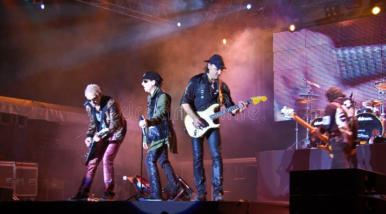
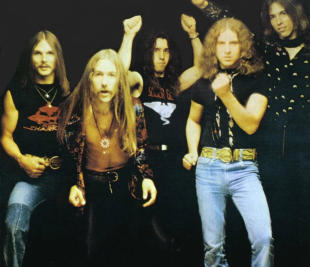
Scorpions mid 70’s lineup: from left to right: Rudolf
Schenker, Uli Roth, Rudy Lenners, Klaus Meine, and Francis
Buchholz.
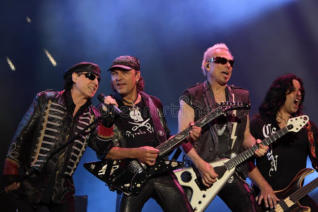








© 2022-2025 Lava-rox. All Rights Reserved.
The 70’s Part One
The 1970’s were the peak years of the classic hard rock sound.
New bands heard the thunder before them, and with those
influences created new styles and sounds solidifying the hard
rock genre.
In 1973, the 60’s band Free dissolved. Singer Paul Rodgers and drummer Simon Kirke recruited guitarist Mick Ralphs and bassist Boz Burrell to form a new hard rock quartet. Paul got the name from a photo in an old Victorian book captioned “beware of bad company”, and “Bad Company” was born. Led Zeppelin’s manager Peter Grant took on that role for the new band and they signed onto Zeppelin’s label Swan Song. Their 1974 self titled release was an instant hit reaching the top of the charts in both the US and UK, featuring the hits “Can’t Get Enough” and “Movin On” . They followed up with Straight Shooter in 1975 and Run With The Pack in 1976; both were popular records peaking at the top of the charts. By the end of the 70’s the band grew tired of touring, and their manager Peter Grant lost interest after the demise of Led Zeppelin in 1980. Bad Company would reform several times over the next decades both with and without Paul Rodgers, but the awesome straight up hard Rock sound from the first two albums was not the same. Bad Company are shown below, from left to right: Boz Burrell, Paul Rodgers, Mick Ralphs, and Simon Kirke. -------------------------------------------------------------------------------------------------------------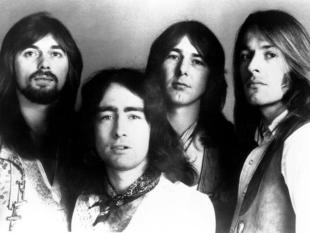
Formed in 1969 by singer/bassist/song write Phil Lynott, Irish rockers Thin
Lizzy had released the hit “Whiskey In a Jar” years earlier but had not been
able to follow that up with another hit. The band changed guitar players and
styles several times and in 1974 found a more hard rock style.
1976’s release of Jailbreak was the first Thin Lizzy Album to chart in the UK
and featured the smash hits “Jailbreak” and “The Boys Are Back In Town”.
The band followed up releasing Johnny The Fox also in 1976. They followed
up with succesful tours but tensions in the band rose once again, and again
Irish guitarist Gary Moore was brought in to replace Brian Robertson.
Robertson returned in 1978 for a tour the the recording of their live album
Live And Dangerous which successfully captured their energy and sound.
Thin Lizzy epitomized the dueling guitar hard rock sound and were a major
influence on future music.
The band continued rotating guitarists, their last successful album
Chinatown, released in October 1980.
By 1986 Phil Lynott was hospitalized due to multiple issues and passed
away, never again recreating the great sound Lizzy was famous for. The
classic lineup is shown below; from left to right guitarist Brian Robertson and
Gorham, Phil Lynott, and drummer Brian Downey.
--------------------------------------------------------------------------------------------------------------

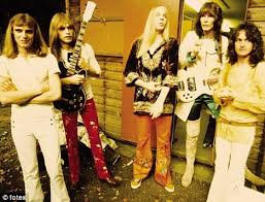
In the late 60’s a new band with a completely new style was forming in
London. Blending jazz, blues, pop, and rock with complex time signatures,
changes, and multi-layered harmonies, Yes released their first self-titled
album in 1970. They followed up with Time And A Word which made the UK
charts.
The addition of guitarist Steve Howe brought new guitar techniques to
band and they retired to the English countryside to write their next LP, The
Yes Album released in 1971, which made the chart with perennial hits such
as “Yours Is No Disgrace”, “I’ve Seen All Good People”, and “Starship
Trooper”.
Keyboardist Rick Wakeman was added to complete the band and Fragile
was released at the end of 1971. Yes now defined a new progressive
sound, and their records were topped the charts. 1972’s Fragile was
critically acclaimed and supported by extensive touring. Inspired by the
traffic “roundabouts on their commute to the studio, Fragile’s hit single
“Roundabout” became their best known song. The middle section contains
some odd sounding percussion instruments. The band wanted some
different percussive sounds and with the music stores being closed, they
gathered milk bottles and filled them with different levels of liquid to create
different pitches.
Drummer Bill Bruford left in 1972 and was replaced by Alan White who had
once sat in with the band. With a worldwide tour pending, Alan only had a
few days to learn their vast and complex repertoire, which he pulled off
impressively. The live album Yes Songs was recorded and released in 1973
featuring what many would consider their “classic” and most talented
lineup. The bands album artwork was skillfully done by Roger Dean, who’s
work became a trademark of the band.
Yes struggled in the last 70’s and 80’s with personnel changes and changing
music popularity.
In 1980, singer Jon Anderson left and found themselves again without a
keyboard player. Trevor Horn and Geoff Downes from the Buggles were
recruited and a newer more edgier sound was produced. Drama was
released in 1979 and peaked in the charts featuring “Machine Messiah”.
The band toured to sold out shows in North America.
1981 saw the band breakup with Downes and Howe leaving to form Asia.
Singer songwriter guitarist Trevor Rabin was introduced to bassist Chris
Squire and Alan White in 1982. They created a new band called Cinema,
however after Jon Anderson was brought back in they changed the name
back to Yes. The new band featured more of a pop style which was evident
on their first album release in 1983 90125, named after it’s catalog serial
number. 90125 was a smash hit driven by hit singles such as “Owner of a
Lonely Heart”, “Leave It”, and “It Can Happen”. They followed up with
extensive tours and Big Generator in 1985. However Anderson felt stifled by
Rabin’s creativity and the band broke up in 1988.
There would be a grand “Union” of most of the past members of the band
in 1991 which produced a 2CD release by the same name.
Yes was finally introduced into the Rock ’N Roll hall of fame in 2017, an
acknowledgment and tribute to their lasting impact on music. Yes
continues to record new music and tour today, although no original
members are present.
Yes are considered the founders of “prog rock” and would be a major
influence on countless bands to come.
“Classic” Yes lineup, from left to right: Alan White, Steve Howe, Rick
Wakeman, Chris Squire, and Jon Anderson.
-------------------------------------------------------------------------------------------------------------
Also in 1968 in London, another rock band was forming. UFO’s first two
records did not get much attention but the addition of guitarist Michael
Schenker in 1973 and the release of Phenomenon created a new hard rock
format.
Force It in 1975, No Heavy Petting in 1976, and with the addition of keyboard
player Paul Raymond, the release of Lights Out in 1977 perfected their
sound and achieved commercial success with hits “Too Hot Too Handle”,
“Lights Out”, and “Love to Love”. The band toured extensively and their
popularity grew internationally. They released the double live album
Strangers In The Night in 1979 which peaked in the UK charts and captured
the raw energy of their live shows.
Tensions between vocalist Phil Mogg and Michael Schenker boiled over in
late 1978 and Schenker left for a highly successful solo career. UFO
continued to record new music and tour but the music was not the same.
Schenker would return several times to restore the classic lineup, but after
a tour would leave again to continue his solo work.
UFO would continued until Phil Mogg’s health issues caught up with him in
2022.
UFO would be a major influence on the heavy metal bands of the 1980’s
including Iron Maiden, Guns N’ Roses, Metallica, Dio, Slayer, and Def
Leppard.
The classic UFO lineup are shown above: from left to right: Michael
Schenker, Phil Mogg, Paul Raymond, Pete Way, and Andy Parker.
-------------------------------------------------------------------------------------------------------------

Also in the late 1960’s over on the continent Michael Schenker’s older
brother Rudolf started a new band in Hanover Germany. After recruiting
Michael and vocalist Klaus Meine in 1972 they released their debut album
Lonesome Crow. While on tour, Michael left to join UFO, but recommended
Uli Jon Roth to replace him. Roth initially refused having his own group
Dawn Road. Eventually the two bands merged and with the release of Fly
To The Rainbow in 1974, the band we know as Scorpions took shape with
their signature hard rock sound. Michael appears on several tracks on this
album.
In Trance and Virgin Killer followed in ‘75 and ‘76 won the band much
popularity and commercial success.
In 1977 they released Taken By Force featuring the hit “Steamrock Fever”
which was heavily promoted . Uli Roth’s progressive influence can clearly
be heard on this record in songs such as “Sails Of Charon” and “He’s A
Woman - She’s A Man”. Uli left the band after recording of their live album
in Japan, Tokyo Tapes.
Mathias Jabs replaced Roth and in 1979 the band recorded Lovedrive with
the assistance of Michael Schenker on several tracks. Lovedrive is
considered the most popular record of their career with the mix of hard
rock and melodic ballads. Lovedrive charted well with the hit singles
“Loving You Sunday Morning”, “Always Somewhere”, and “Holiday”.
The Follow ups Animal Magnetism in 1980 and Blackout in 1981 cemented
their legacy as one of the world’s premier hard rock bands.
Scorpions would continue performing and recording new music with
release of Rock Believer in 2023, although only Klaus, Rudolf, and Mathias
would remain as permanent band members in the lineup.
Scorpions mid 70’s lineup: from left to right: Rudolf Schenker, Uli Roth,
Rudy Lenners, Klaus Meine, and Francis Buchholz.
Like UFO, Scorpions were a major influence on the hard rock and metal
bands that followed. They have sold over 100 millions records achieving
gold and platinum status. Rolling Stone describes Scorpions as the "heroes
of heavy metal".
Additional graphics available at higher screen resolutions, such as tablets,
laptops, and desktops.












